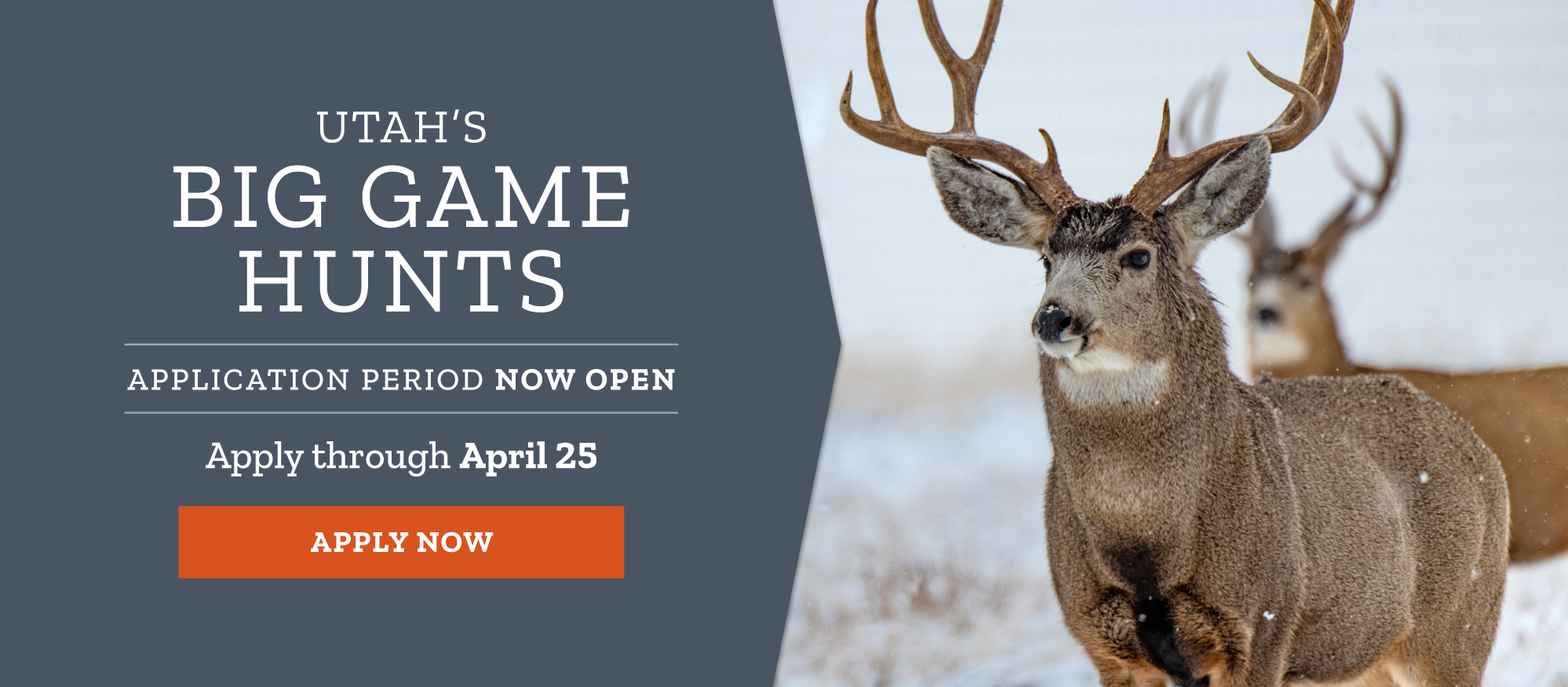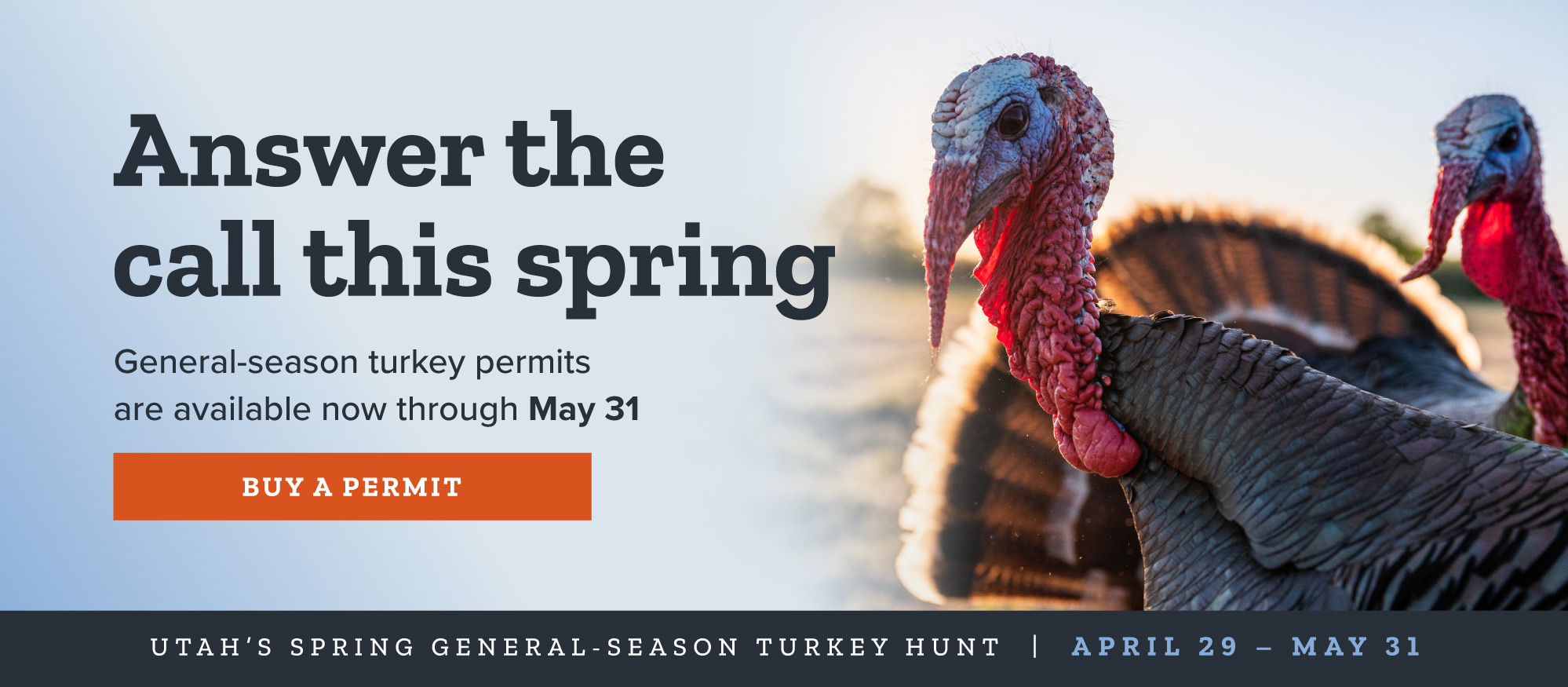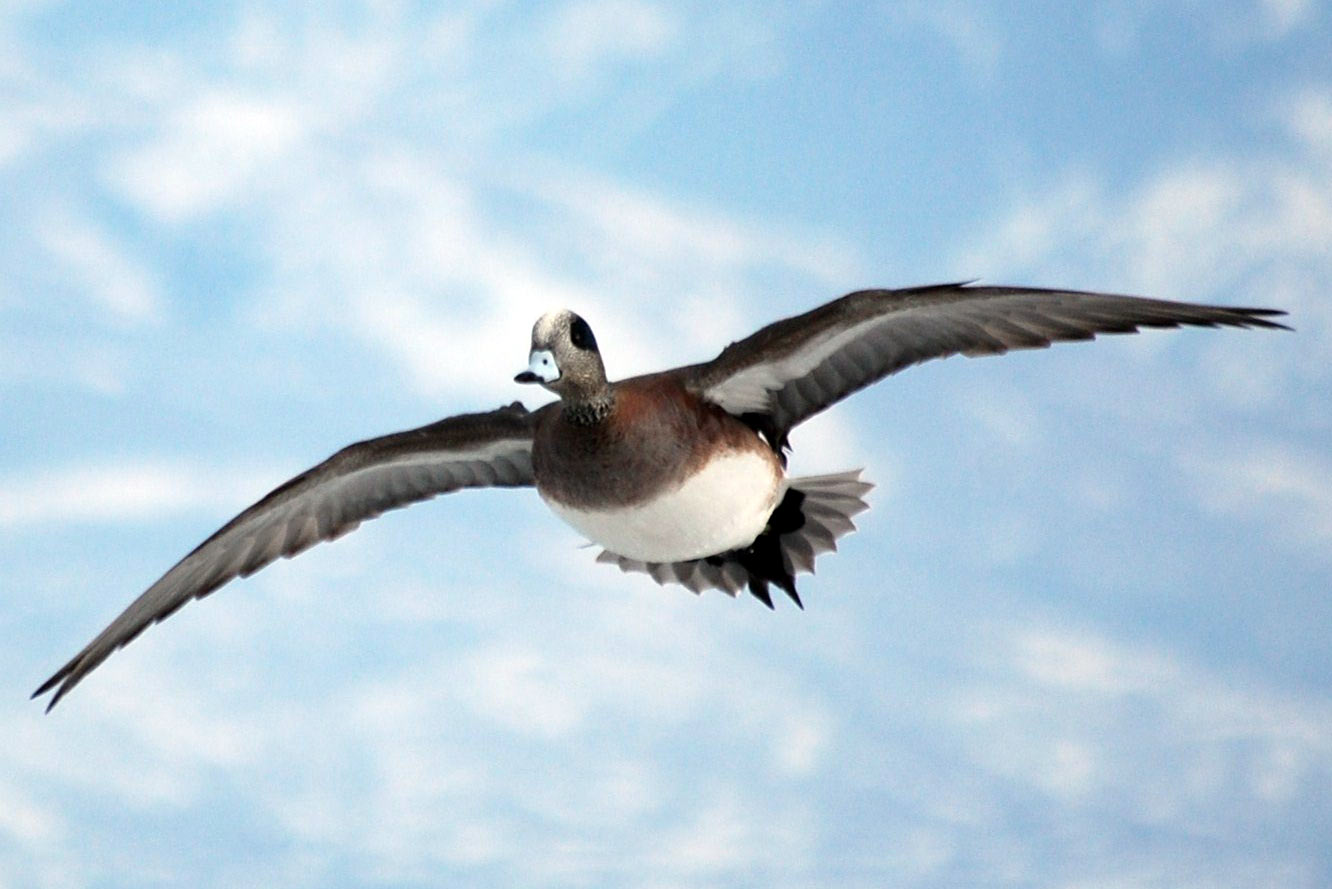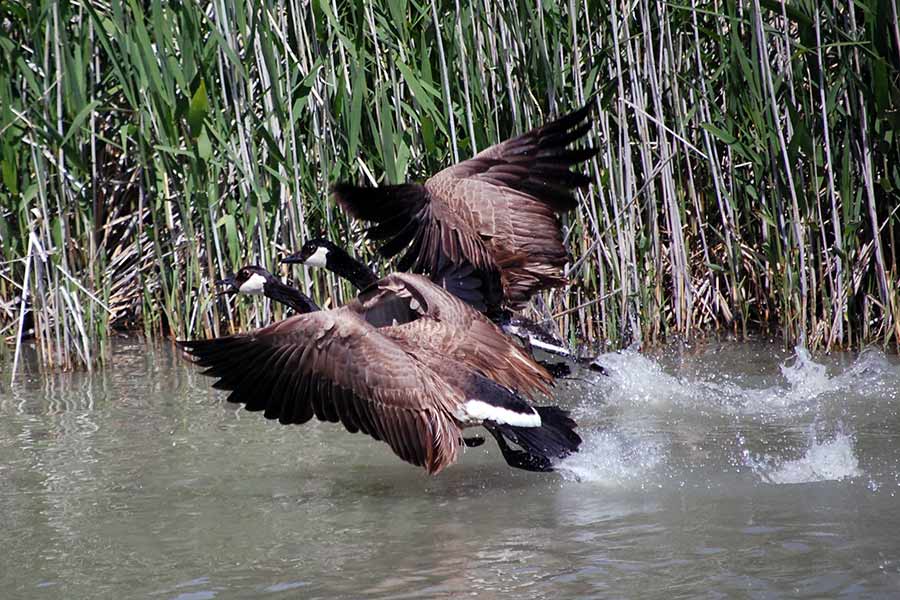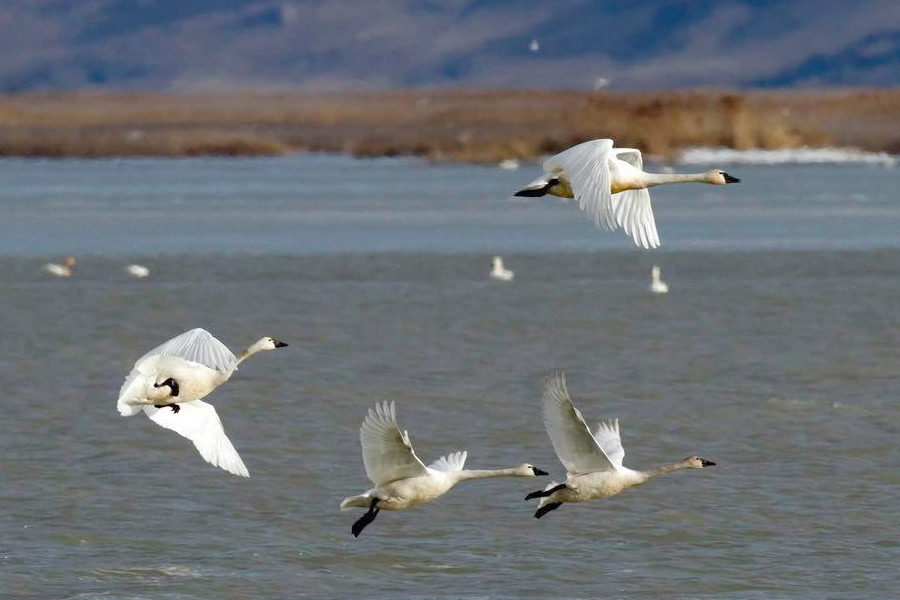What hunters should know about the 2023 Utah waterfowl hunts
Salt Lake City — It's a quiet, still morning as you sit near the edge of a lake in your blind. You hear some birds in the distance and turn your head to see several ducks flying toward you. Your heartbeat quickens, and you slowly raise your shotgun. Waterfowl hunting season is finally here.
With the exception of tundra swans (which require a permit from the hunt drawing that ended July 19), the rest of the waterfowl hunts in Utah are open to anyone with a Utah hunting license. However, you are also required to have a Harvest Information Program (HIP) number to hunt any waterfowl in Utah, as well as a federal duck stamp, if you are 16 years of age or older.
You can register for a free HIP number on the Utah Division of Wildlife Resources website. You can purchase a duck stamp from your local post office, various license agents or by phone. The phone number is 800-782-6724. Legislation earlier this year also authorized the DWR to sell duck stamps online, so that option will be available soon. Federal duck stamps help fund wildlife conservation across the U.S., with 98% of the purchase fee going directly to help acquire and protect wetland habitat and purchase conservation easements for the National Wildlife Refuge System.
If you are planning to hunt ducks, geese or swans this fall, here is some information to be aware of:
Ducks
Local duck populations in Utah are doing great this year, and several DWR wetland managers have reported excellent duck production in their respective management areas. However, duck numbers across North America have decreased overall, due to long-term drought and disease impacts. There were fewer ponds and associated grasslands available for nesting last year, which led to an overall decrease in reproduction in the Pacific Flyway.
"Many prairie pothole regions in North America that are of critical importance to breeding waterfowl species were dry last year, due to drought," DWR Migratory Bird Coordinator Jason Jones said. "These conditions have persisted over several years, so generally waterfowl production was below average last year. Waterfowl numbers usually peak in mid-September in Utah, with the dabblers coming first, and the divers usually migrating through a bit later in October. Utah waterfowl hunters may experience fewer birds coming through Utah this hunting season compared to the last 10 years."
Typically, about 15 duck species can be found in Utah. Details and photos of each species can be found in the 2023–24 Utah Waterfowl Guidebook.
"Hunters can greatly improve their success during the duck hunt by spending some time scouting before each hunt," Jones said. "Learning where and when birds are in a specific location can allow hunters to be where the birds want to be, when they want to be there, and will greatly increase the number of birds they harvest."
For instance, each duck species uses different types of habitats. Diving ducks, like canvasbacks and redheads, like big, open waterbodies. Puddle ducks, like teal and shovelers, are generally found in shallow water. And species like mallards can be found just about anywhere.
"Think about the species you are hunting and then look for them in the habitats they want to be in," Jones said. "If you aren't finding the species you are targeting, move around to different areas until you find them."
Calls are also an effective tool in helping hunters be successful during duck hunts. Most hunters use a traditional duck call that sounds like a mallard hen. Experimenting with other sounds, such as wigeon or pintail whistles, can also increase success. Dogs are great at helping hunters retrieve downed birds and will increase your chances of finding ducks that fall in thick cover.
The general-season duck hunt runs from Oct. 7 to Jan. 20 in Utah's northern zone and runs from Oct. 14 to Jan. 27 in the southern zone. The northern zone youth waterfowl hunt takes place on Sept. 23, and the southern zone youth hunt will happen on Sept. 30. Check the Utah Waterfowl Guidebook for the boundaries of the two zones and to see the bag limits for ducks.
Geese
Canada goose production in Utah was down this year, likely due to many of their nests being flooded during the spring runoff. However, Canada goose populations in the Pacific Flyway are increasing and are currently above their population objectives.
"Hunters should see plenty of geese early in the season," Jones said. "Migrating geese will begin showing up around mid-to-late November. Geese continue to increase in the Pacific Flyway — which includes Utah — and hunting should be good this year. Snow goose numbers have also continued to increase in the Pacific Flyway."
An important tip for success while hunting geese is to use a good call.
"Calling is a very important part of goose hunting," Jones said. "Geese are very social birds, so being able to sound like a goose can help hunters harvest more birds."
Dark and white-fronted geese season dates:
- Northern area: Oct. 7-14 and Oct. 26 to Jan. 31, 2024
- Wasatch Front area: Oct. 7-14 and Nov. 10 to Feb. 15, 2024
- Eastern Box Elder area: Oct. 7 to Jan. 20, 2024
- Southern area: Oct. 14 to Jan. 27, 2024
Light geese season dates:
- Eastern Box Elder, Northern and Wasatch Front goose areas: Oct. 16 to Dec. 22 and Feb. 1 to March 10, 2024
- Southern area: Oct. 25 to Dec. 15 and Jan. 16 to March 10, 2024
The youth waterfowl hunt that will be held on Sept. 30 in the southern zone will allow dark goose and white-fronted goose hunting. Check the Utah Waterfowl Guidebook for the specific zone boundaries and bag limits.
Hunters should also note that most light goose hunting takes place on private property. Make sure to get written permission from landowners before hunting on their property.
Swans
Tens of thousands of swans move through Utah every fall on their way to their wintering grounds in California. Tundra swan populations in the Pacific Flyway are still doing well, and hunters can expect to see similar numbers as in previous years in Utah.
"Swans migrate and stop over at the same locations each year," Jones said. "Traditional hunting areas, such as the Bear River Migratory Bird Refuge, will hold swans beginning in late October to early November, and they typically stay in the area until the marshes freeze up."
Hunters should also be aware that tundra swans will leave resting areas to feed during the morning and late afternoon, and then throughout the day as temperatures get colder. So scouting before the hunt can help hunters determine when swans are moving and know what times of day to hunt.
"Hunting along a swan's flight path, or in their feeding locations, will increase your odds of harvesting a swan," Jones said.
Hunters should also be sure of the swan species they are targeting before attempting to harvest one. Trumpeter and tundra swans both migrate through the state, but starting this year, it is illegal to harvest trumpeter swans in Utah. Only tundra swan hunting permits are issued to hunters now. Hunters will still be required to check in any harvested swans at a DWR office. Trumpeter swans will be seized, and the hunter may face a citation. In addition, hunters who harvest a trumpeter swan will also be prohibited from being able to apply for a tundra swan hunting permit for several years. Youth who harvest a trumpeter swan must wait three years until they can apply for a tundra swan permit, and adults must wait five years.
Each species can be identified by size and sound. Trumpeter swans are significantly larger than tundra swans. Trumpeter swans do not have a yellow-colored area near their eyes, and they also make a distinctive trumpet-like sound, hence their name.
Utah is one of only nine states in the U.S. that allows hunting for swans.
The tundra swan season runs from Oct. 7 to Dec. 9. However, if the federal quota of 20 trumpeter swans is met before Dec. 9, the swan hunting season will close early. Those with a tundra swan permit may harvest only one tundra swan during the 2023 season.
Avian influenza
Highly pathogenic avian influenza viruses are very contagious among birds and can cause rapid and high mortality in domestic birds, such as chickens, turkeys and domestic ducks. These viruses occasionally kill wild birds, as well. The most common wild birds impacted by the virus are typically waterfowl, shorebirds, raptors and scavengers (which include birds like hawks, owls, ravens and vultures). There are usually few symptoms in waterfowl and shorebirds, but the virus can kill raptors and scavengers quickly.
"Finding birds with highly pathogenic avian influenza will be less common this year," DWR Veterinarian Ginger Stout said. "However, hunters should still take precautions while out in the field this fall, and if anyone finds a group of five or more dead waterfowl, they should report it to the nearest DWR office and absolutely make sure not to touch the birds or pick them up."
If you are planning to hunt waterfowl this fall, here are some tips to keep yourself and your hunting dog safe:
- Do not harvest, handle or eat any animal that appears sick.
- Field dress game animals in a well-ventilated area or outdoors.
- Avoid direct contact with the intestines.
- Wear rubber or disposable latex gloves while handling and cleaning birds. Wash your hands with soap and water, and thoroughly clean all knives, equipment and surfaces that come in contact with the birds. Disinfect using a 10% chlorine bleach solution.
- Keep your game birds cool, clean and dry.
- Do not eat, drink or smoke while cleaning game or handling animals.
- All game meat should be thoroughly cooked before eating (well-done or 165° F).
- If you have domestic poultry, keep them separated from the wild bird carcasses you have harvested, and do not handle poultry after handling wild birds.
For more information about avian flu in wild birds, visit the DWR website.
Waterfowl management areas
There are more than 20 waterfowl management areas (WMAs) throughout Utah that are owned and managed by the DWR. The WMAs opened to the public on Sept. 21.
Access and water conditions at the majority of the waterfowl management areas should be good this year, due to the large amount of spring runoff from the record-breaking snowfall last winter. For specific details and condition reports about the WMAs, visit the DWR website. Be sure to check the conditions before attempting to launch an airboat at a WMA.
"Record snow-pack and the subsequent spring run-off did help water levels in the Great Salt Lake to increase from last year's record low; however, food resources and access around the associated wetlands of the Great Salt Lake are still suffering due to long-term drought conditions," Jones said. "Because of that, waterfowl may migrate through Utah quicker this year, which will make hunting more difficult later in the season."
Waterfowl Slam
If you'd like to add some fun and challenge to your hunt, consider completing the Utah Waterfowl Slam. Hunters earn a slam by completing different requirements, such as harvesting a group of species in a certain time period or location. There are currently 10 slams with different levels of difficulty, so you can find a variety of fun, unique challenges. Along with trying something new, hunters who complete the slam can also earn colorful, collectible leg bands.
The money earned from the slam is used to complete habitat-improvement projects on the different WMAs across the state. Learn more about the Utah Waterfowl Slam on the DWR website.
